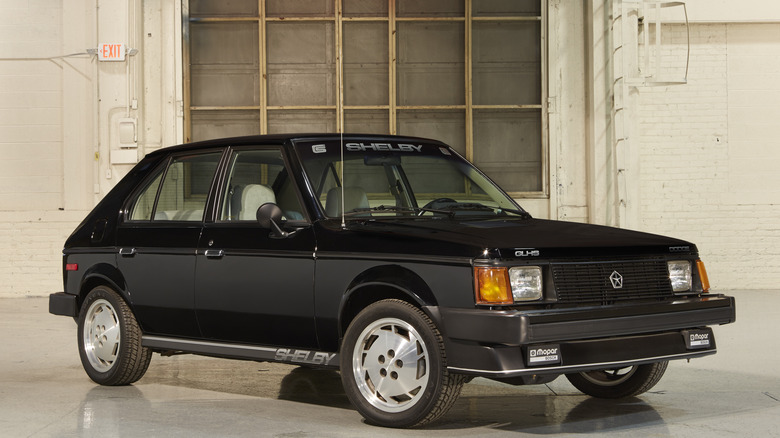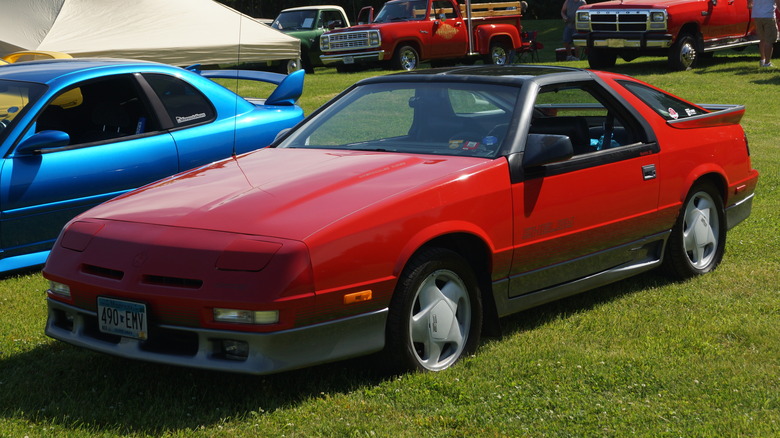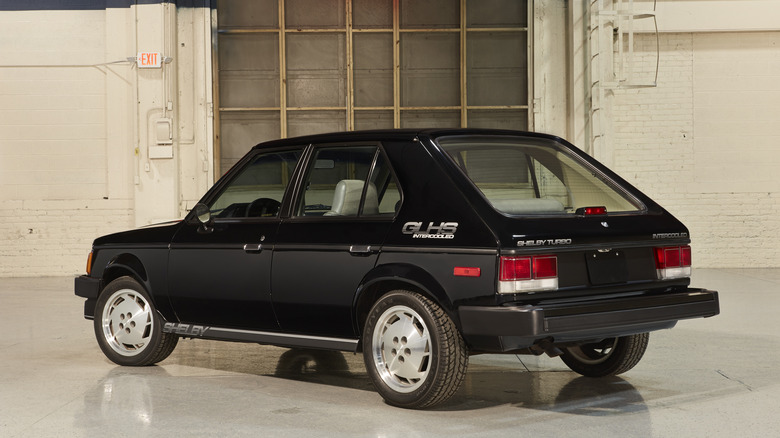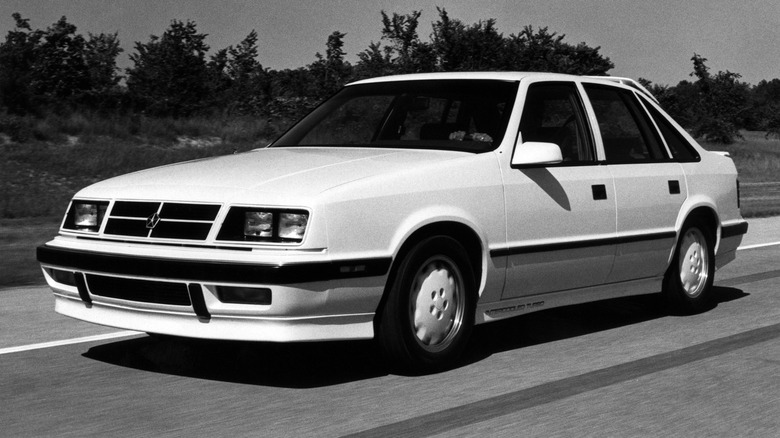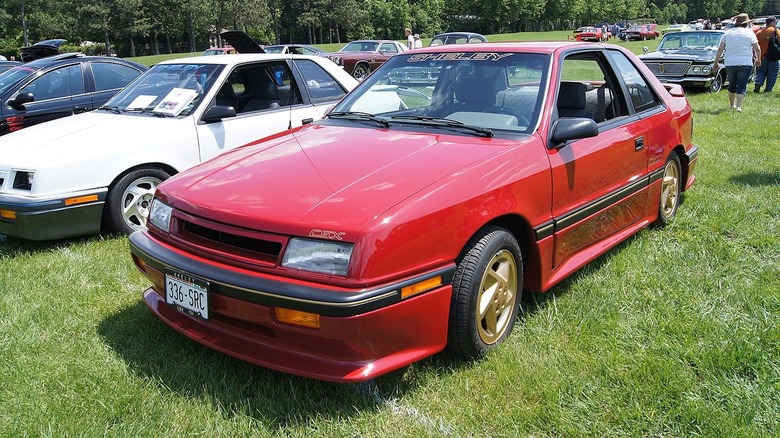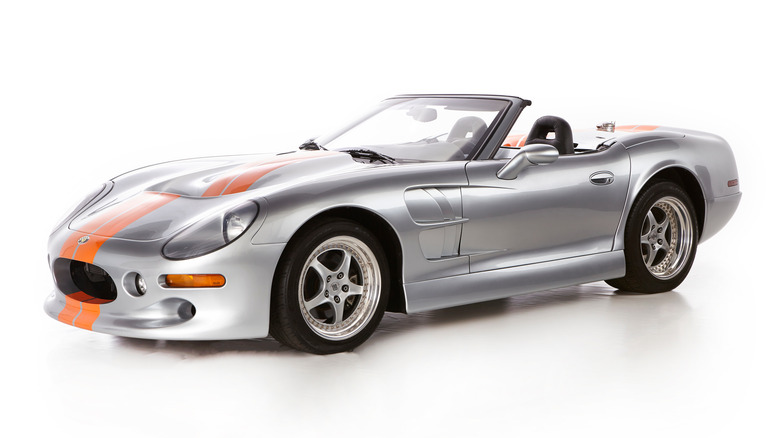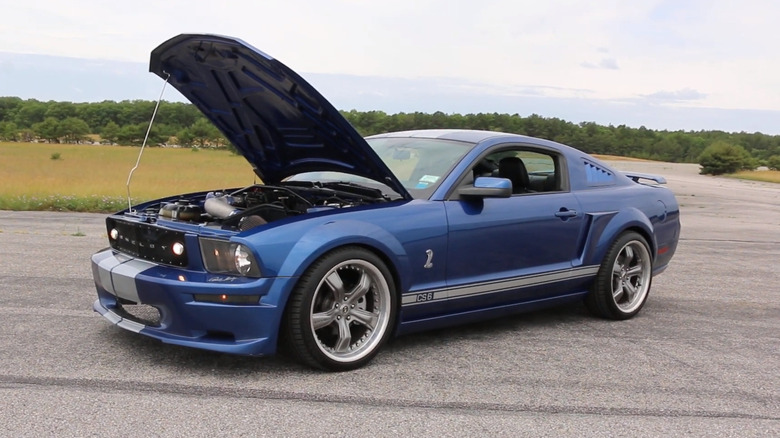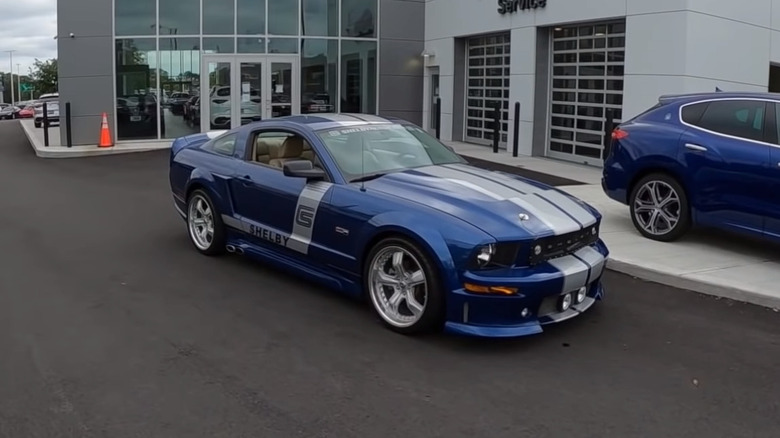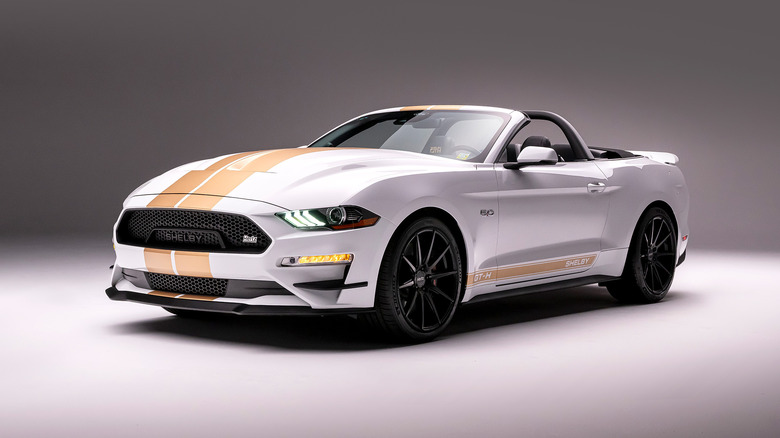8 Underappreciated Shelby Cars That Are Still Tons Of Fun
There are few figures in automotive history quite as iconic as Carroll Shelby. The man behind the Cobra and the Shelby Mustang took American performance cars to new heights in the '60s, with Shelby's storied career as a race driver providing the basis for the philosophy on which his cars were based. Shelby's formula could arguably be summed up as simply as: powerful American engine, small car. Said formula proved an extremely effective one, helping to set the blueprint for American performance cars for the coming decades.
However, by 1970, Shelby had decided to retire. He then spent much of the '70s traveling and working on his ranch. He was coaxed out of retirement in 1982 by Chrysler boss Lee Iacocca, and for the next 30 years, continued to work on producing new cars, many of which are lesser known than his earliest work. He spent nearly 10 years making high-performance Dodge models, and at the turn of the century, decided to launch an entirely new sports car that took inspiration from the legendary Cobra. Although these later models never saw the commercial success or recognition of his most famous cars, the general consensus remains that they're still tons of fun to drive.
Dodge Daytona Shelby Z
While, in the earlier years of his partnership with Dodge, Carroll Shelby had taken a more active role in helping develop cars, by the late '80s there were plenty of Shelby-badged Dodge cars that had very little input from the man himself. One of those Shelby-branded cars was the 1987 Dodge Daytona Shelby Z, a front-wheel drive sports coupe that aimed to compete against the Japanese imports that were dominating the sales charts. It packed a "Turbo II" 2.2L four-cylinder engine, a far cry from the V8s that Shelby was best known for, but still with a respectable 174 horsepower on tap.
The '87 Shelby Z was not the first Daytona to bear the name — that honor belongs to the '83 model year. However, it was the second-gen model that's arguably the collectors' choice, with revised styling, and further improvements to the suspension and brakes. While a front-wheel drive, four-cylinder sports car was never going to shatter performance records, the Shelby Z was by all accounts a solid option compared to the competition at the time. Its humble origins and unremarkable performance have kept it from becoming sought after, but that means it's one of the cheapest ways to get your hands on a Shelby-branded car today.
[Featured image by Greg Gjerdingen via Wikimedia Commons | Cropped and scaled | CC BY-SA 2.0]
Dodge Omni Shelby GLH-S
One of the best-forgotten gems from the '80s is the Shelby GLH-S, a hot hatch based on the Dodge Omni. Built in response to the success of European hot hatch models like the Golf GTI, the GLH-S boasted 175 horses from its inline-4 engine, which made it surprisingly fast both on the road and around the track. The engine was mated to a five-speed manual and, like most of Carroll Shelby's Dodge models, the car was front-wheel-drive.
Although it was favorably received by critics at the time, the car was less of a success with buyers. It was always going to be a limited-run model — the Shelby Automobiles facility in Whittier, California could only produce 500 examples a year — so perhaps it's no surprise that the GLH-S failed to make much of an impact on the hot hatch world. Nonetheless, the forgotten rival to the GTI has become a cult classic in recent years, although for now, prices remain affordable.
Dodge Shelby Lancer
American manufacturers didn't really have an answer to the European performance sedans of the mid-'80s, and so Lee Iacocca tasked Carroll Shelby with turning the Lancer into something that could compete with the likes of BMW. The 1987 Shelby Lancer was the result, with all 800 examples of the car built at Shelby's facility in California. The headline upgrade was the Shelby "Turbo II" engine, which produced 175 horsepower and 175 lb-ft of torque, but other extras included uprated sway bars and a Pioneer CD player.
After 1987, Dodge continued making a top-spec Lancer with the Shelby name, but production moved to the company's main facility in Michigan and fewer trim-specific performance parts were used. 1989 was the last year that the Shelby name was used on Dodges, with the Lancer being one of the last models of this long-running collaboration. While the Shelby Lancer never managed to mount a real challenge to the dominance of the German manufacturers, it was genuinely impressive for an American sedan at the time. Today, it's one of the least well-remembered Shelby models, and it's not clear how many of the original run still remain on the road.
Shelby CSX VNT
Although the Dodge Shadow on which it was based was far from groundbreaking, the Shelby CSX VNT debuted some cutting-edge features that proved to be ahead of its time. The CSX VNT acronym stood for "Carroll Shelby Experimental, Variable Nozzle Turbo," with the turbo in question being the first of its kind to be put in a road car. The car also featured composite wheels, another high-tech first. Just 500 examples of the car were made, and all of them were finished in matching Exotic Red with gold accents.
The familiar 175-horsepower four-cylinder engine made another appearance in the CSX VNT, this time in a revised "Turbo IV" guise. Predictably, performance was gutsier than the car's rather ordinary appearance might suggest, and over the years, this combination of rarity and speed has garnered the car a small but dedicated fanbase. It's not unusual to see well-preserved examples come up for sale every so often, and they remain well within the grasp of the average enthusiast. Depending on the condition, good examples tend to sell for around $15-17,000, although one higher mileage car sold for just $6,700 on Bring a Trailer in 2022.
[Featured image by Greg Gjerdingen via Wikimedia Commons | Cropped and scaled | CC BY-SA 2.0]
Shelby Series I
The only Shelby ever designed from scratch by the man himself is also one of his least well-remembered cars. The Series I was the realization of a lifelong ambition to design and build a car starting with a completely blank slate, but production issues and internal fighting at Shelby's suppliers saw the project stall. It didn't help that Carroll Shelby promised more than he could deliver, initially claiming the car would have an Oldsmobile IndyCar racing V8 under the hood. After failing to get the engine to meet legal requirements, he had to settle for the related V8 from the Aurora family sedan instead.
Even so, the finished product was still very potent, with at least 320 horsepower on offer in naturally-aspirated cars, and 450 horses in turbo versions (some sources claim that certain examples of the car made up to 600 horsepower). The design was, as promised, all-new, although spiraling development costs meant that the car's price tag shot up to nearly double what Shelby had initially targeted. GM supplied most of the interior parts, making the car look cheaper inside than its Ferrari-rivaling price would suggest, and to make matters worse, Shelby's small factory massively overran its planned schedule, in some cases finishing cars two years after they were ordered. The Series I might be a supercar designed by one of the most famous faces in the industry, but the many missteps during production mean it's largely forgotten today.
Ford Mustang Shelby CS6
After the botched launch of the Series I, the last stint of Shelby's automotive career saw him reunite with Ford to produce limited edition versions of the Mustang. One of the most obscure Shelby Mustangs is the CS6, of which only 17 are thought to have been made. The car was first unveiled at the SEMA show in 2005, sporting a supercharged 4.0L V6 engine with 370 horsepower and 377 lb-ft of torque.
Unique wheels, badges, and uprated brakes made the CS6 stand out from the crowd, but the price for the car was equally head-turning. With a few optional extras thrown in, CS6 Mustangs could reach north of $75,000 — and keep in mind, this is for a V6 Mustang, not a V8. Few buyers were willing to pay that much for a six-cylinder, making this one of the rarest Shelby Mustangs, as well as one of the least well-known.
Ford Mustang Shelby CS8
Alongside the CS6, the CS8 served as the Mustang for buyers who wanted something more potent than a regular Mustang but didn't want to shell out the big bucks for a top-spec Shelby GT500. The car's 4.6L V8 churned out a little under 500 horsepower and, like the CS6, it featured a number of other upgrades to compliment its increased power. The suspension, brakes, wheels, and a number of other components were all upgraded by Shelby, with several parts shared with the GT500.
A mid-range Shelby Mustang might not have turned heads in the same way as a top-of-the-line car would, but it still delivered the driving experience buyers expected from a Shelby for a lesser price. Examples don't often change hands today, but when they do, prices sit around the $30,000 mark. That seems like a very fair price for a Shelby that's just as powerful as the $100,000+ Series I supercar from a few years prior.
Ford Mustang Shelby GT-H
Carroll Shelby himself may no longer be around to give his blessing to new vehicles, but plenty of high-performance Mustangs continue to be made in his name. One of the strangest of those is the 2022 Mustang Shelby GT-H, with the "H" standing for Hertz, the rental car company. A small batch of specially-built Shelby/Hertz Mustangs was commissioned for the brand's U.S. rental fleet, with 450 horsepower on tap and unique racing-inspired gold stripes.
This isn't the first Hertz-specific Shelby model — the original Shelby Mustang of the '60s was launched as a Hertz rental car in 1966, with 1,000 units added to the fleet. Few of those remain, but thanks to their history, those that do have become cult collectors' items. The partnership was resurrected in 2006 with a fresh batch of high-performance pony cars, and the 2022 Shelby GT-H is simply the latest iteration of the long-running collaboration. While the GT-H is based on the Mustang GT, another Hertz special, the GT500-H, is based on the Shelby GT500. It's actually more powerful than the regular customer GT500, with around 900 horsepower on offer, but it's only available at a handful of locations around the country. While it's this top-spec car that might steal the limelight for customers looking for the ultimate high-horsepower experience, even the lesser GT-H will still be tons of fun to drive.
